Magnetism and Matter Class 12 Notes

Class 12 Physics Chapter 5 Magnetism and Matter Notes – PDF Download
Chapter 5 Magnetism and Matter
Chapter 5 of NCERT notess for Grade 12 Physics includes detailed step-by-step solutions to all textbook problems. Magnetism and matter are two of the most important concepts covered in the NCERT notes for Grade 12 Physics, which require a lot of creativity. Magnetism is not only about magnets but also about phenomena and concepts used in various applications.
University experts design NCERT notes in Vidyakul. Furthermore, Vidyakul provides practice questions on its learning platform to help students understand the chapter. These practice questions help students explore 49 concepts explained byVidyakul. Therefore, to achieve good results, students must thoroughly solve all questions using NCERT notes.
CBSE CLASS 12th PHYSICS 5 NOTES
Points to Remember
Some of the important points to remember from the chapter are as follows:
There are two poles, one north and one south. Magnetic poles that are similar repel, while those that are dissimilar attract.
Therefore, there are no magnetic monopoles. Cutting a magnet in half yields two smaller magnets.
Also, a geographic meridian is a vertical plane that passes through a geographic axis.
Magnetic meridian is a vertical plane that passes through magnetic axis.
The Curie temperature is the temperature at which the transition from ferromagnetism to paramagnetism occurs.
Besides, permanent magnets are substances that, at room temperature, retain their ferromagnetic property for an extended period of time.
Topics and Sub-topics
Chapter 5 of Vidyakul Grade 12 Physics notes will help students grasp the brief concept of magnetism and matter. The magnetism of matter refers to the force exerted by magnets to attract or repel each other. The magnetic moments and currents of some elementary particles produce a magnetic field. It also affects other magnetic moments and currents.
Download the FREE PDF of Magnetism and Matter Class 12 Notes and start your preparation with Vidyakul!
Download this solution for FREE Download This PDF
Download Vidyakul App for more Important videos, PDF's and Free video lectures.



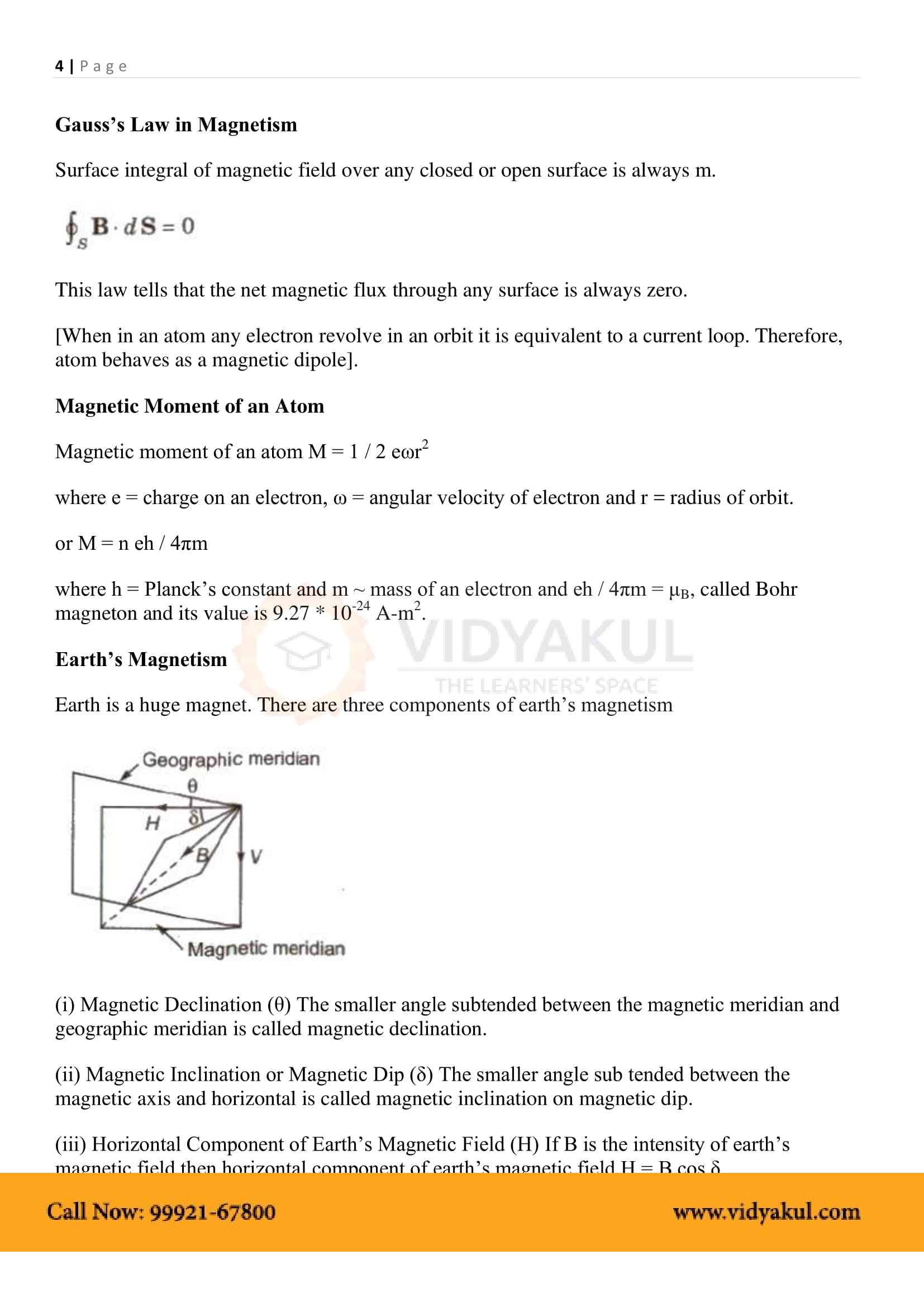
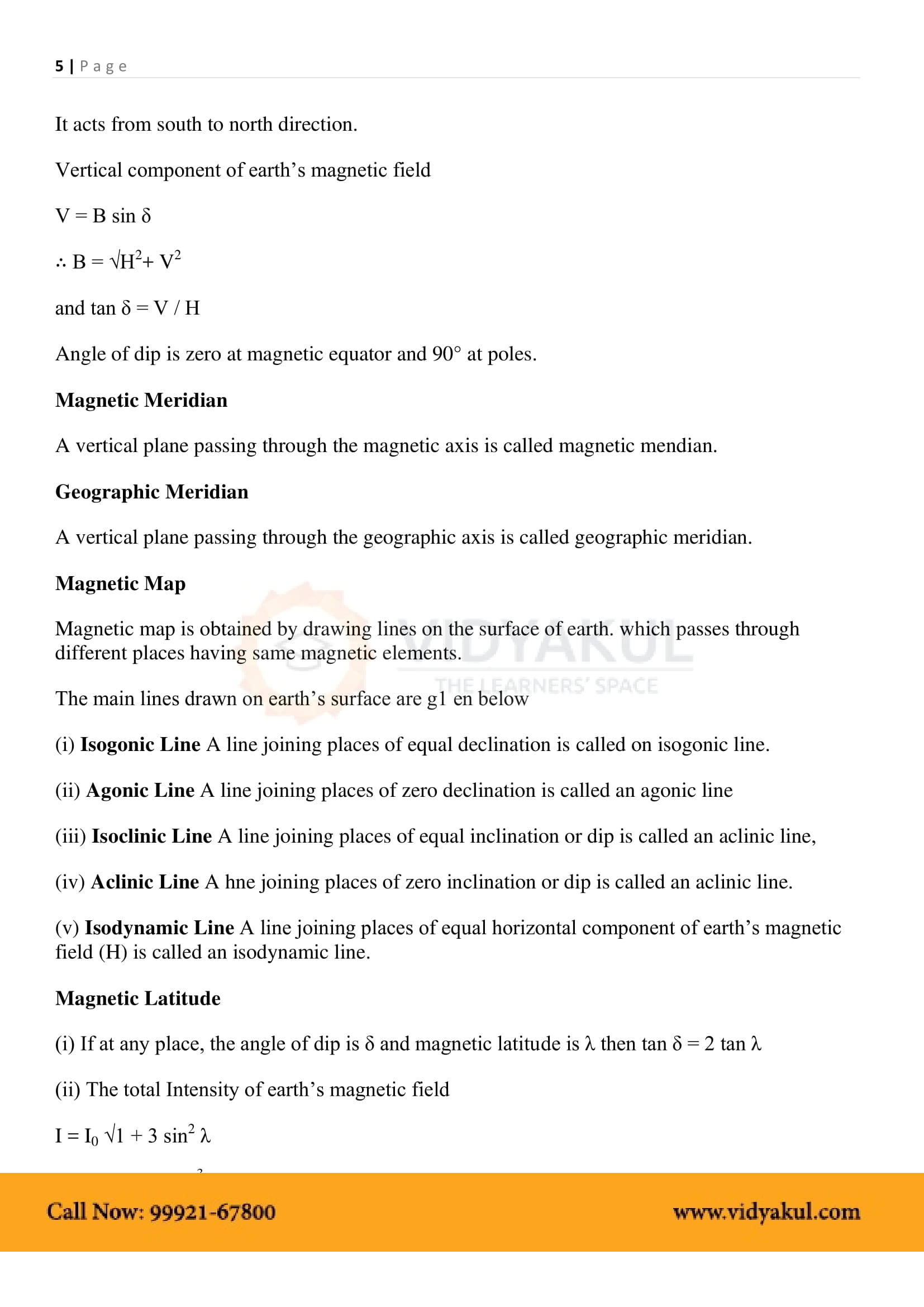
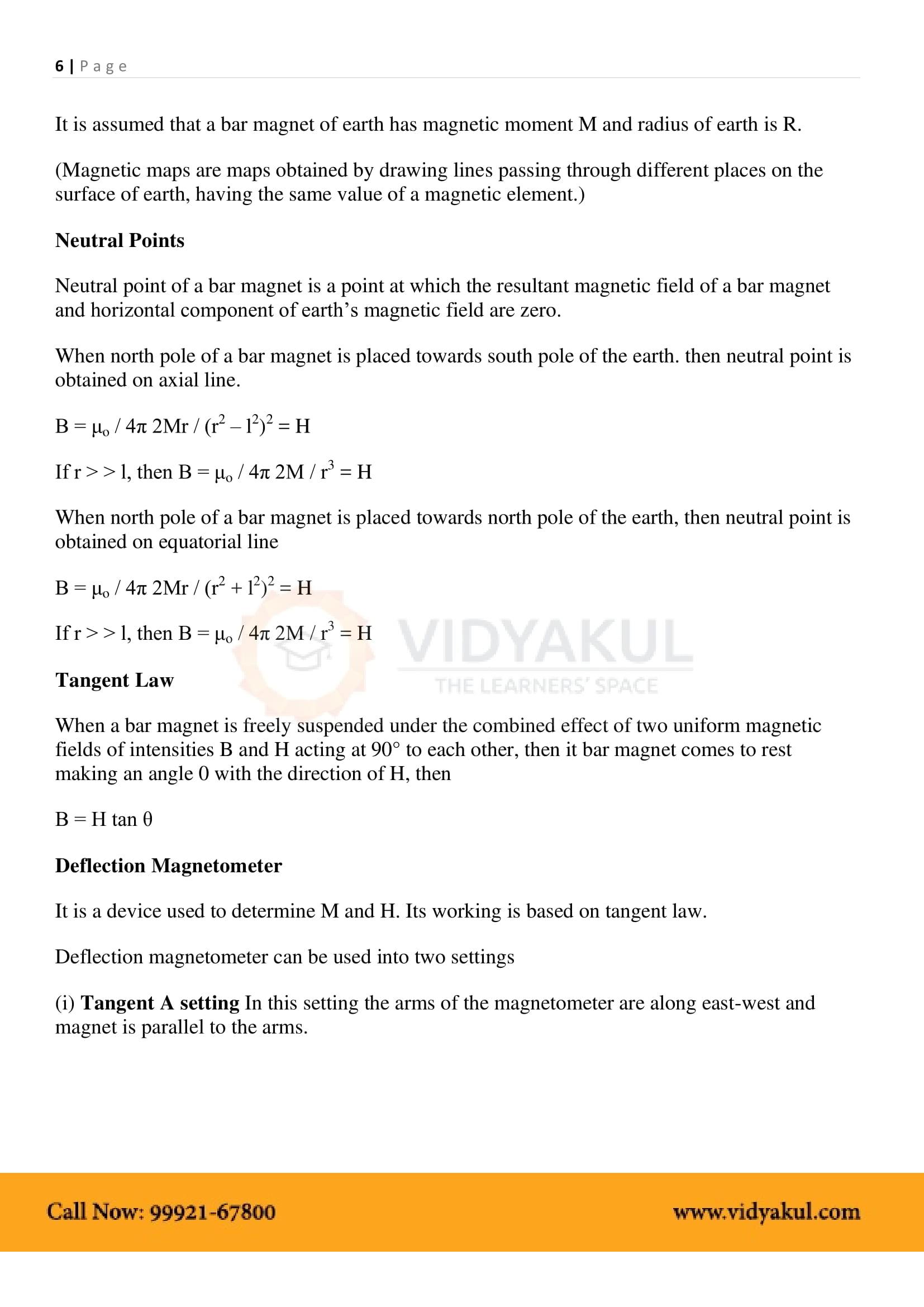
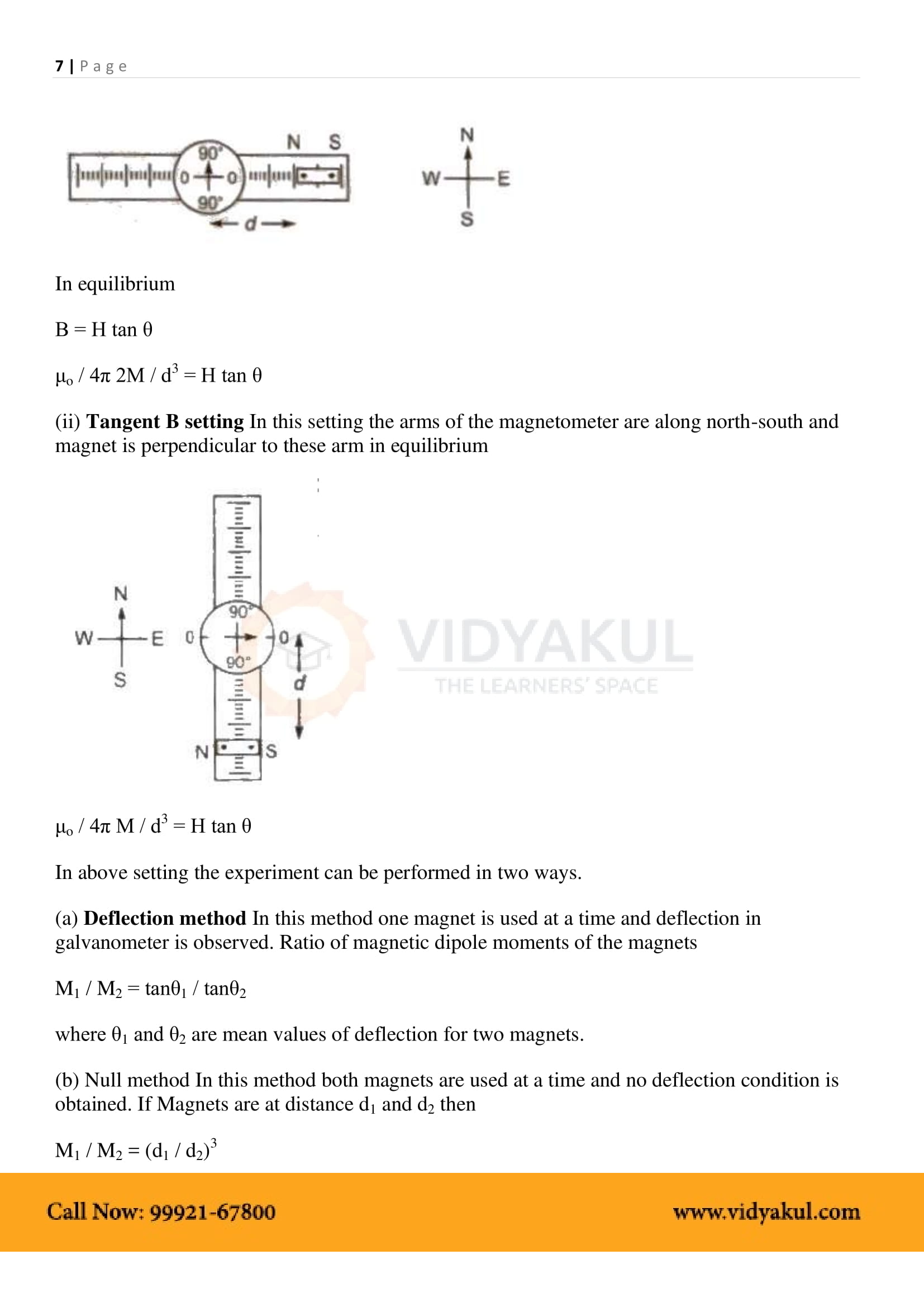

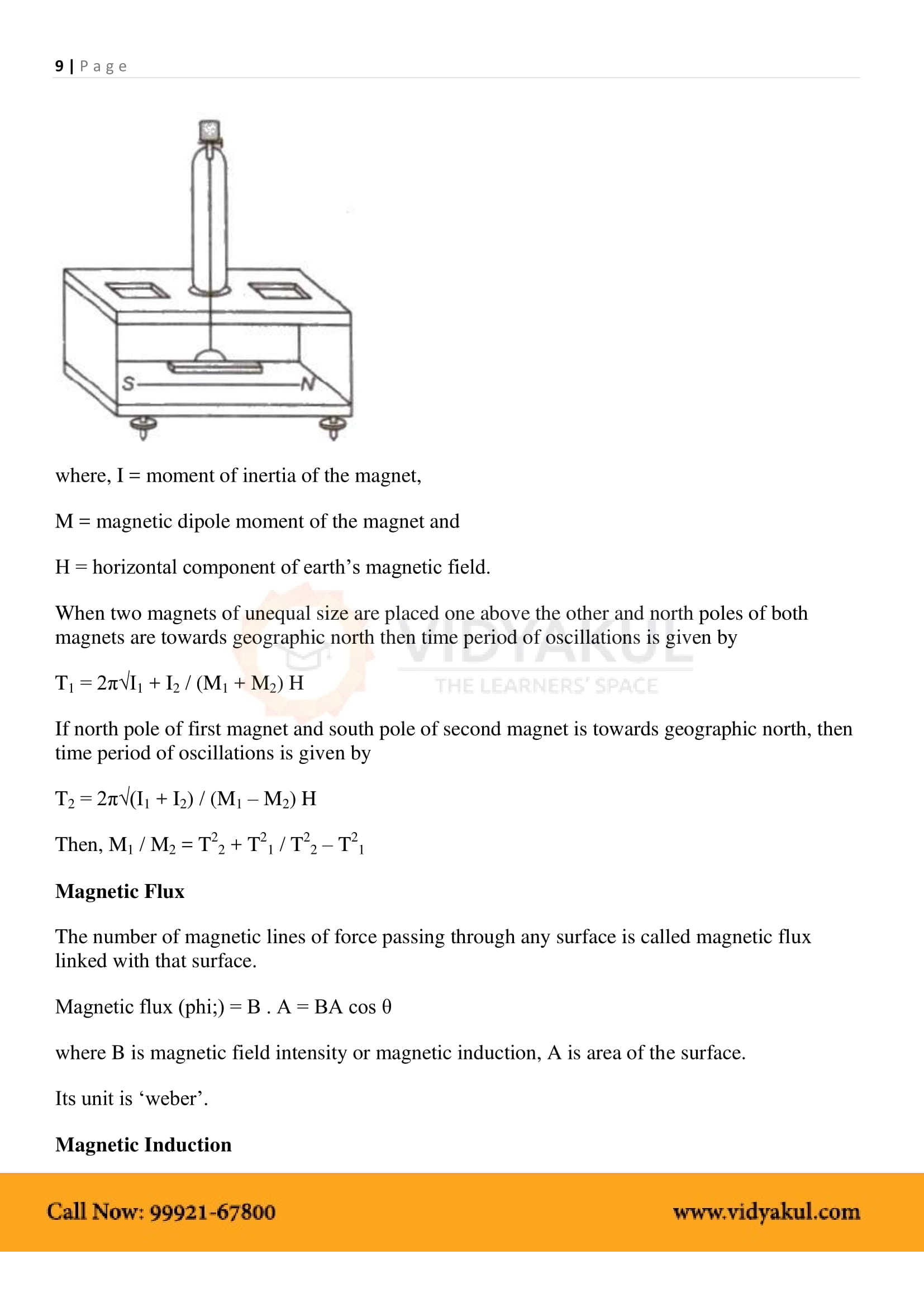
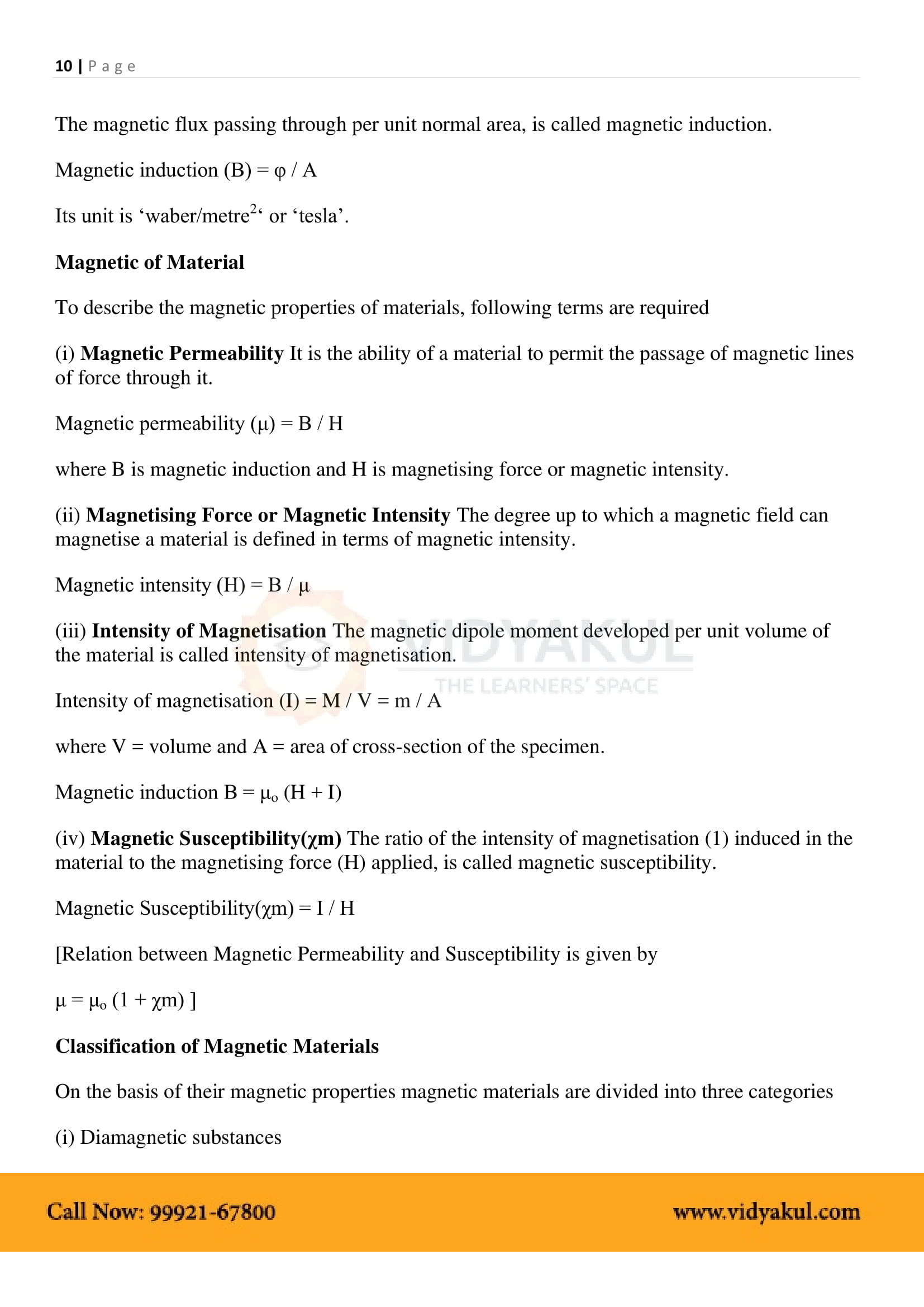

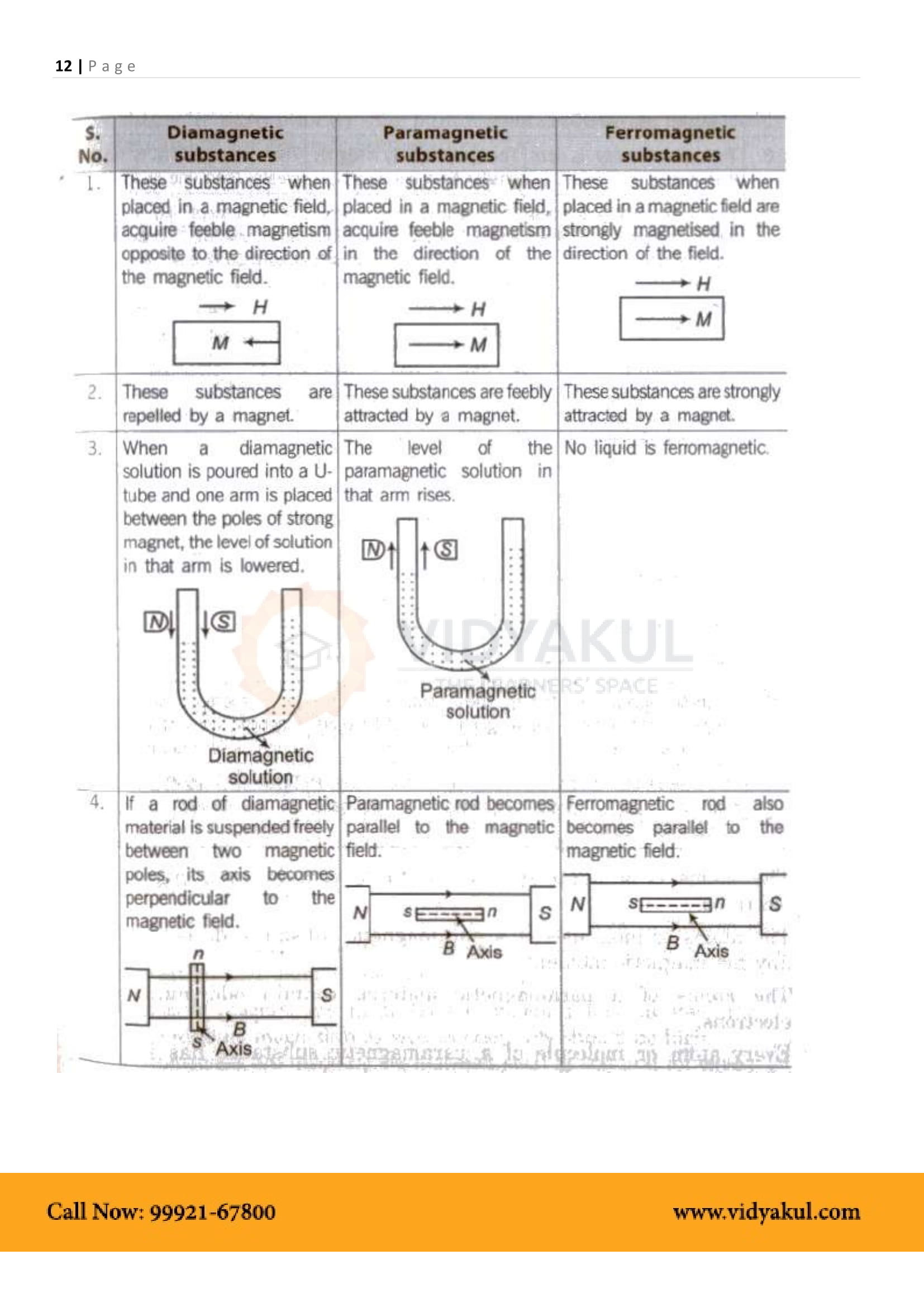

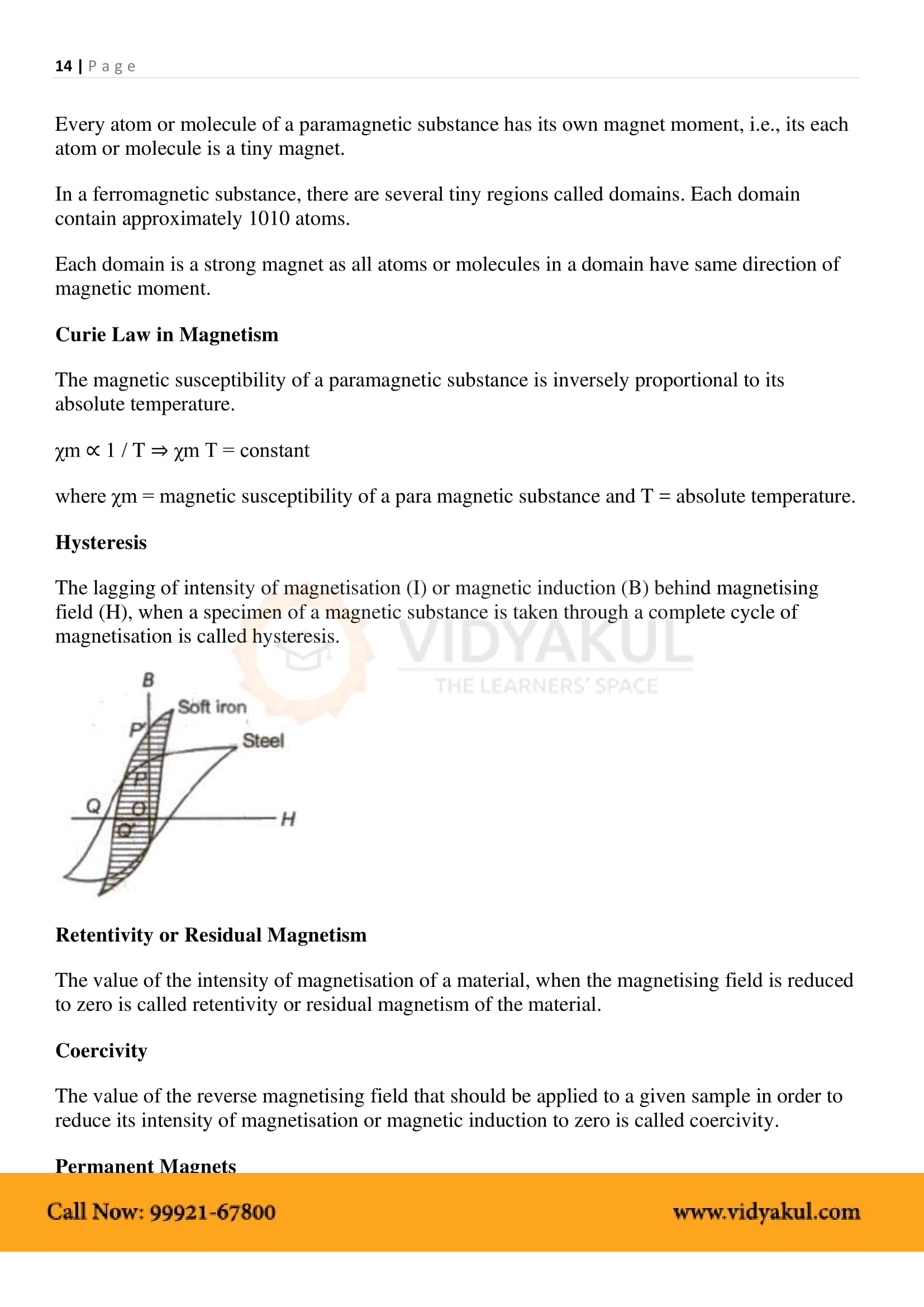
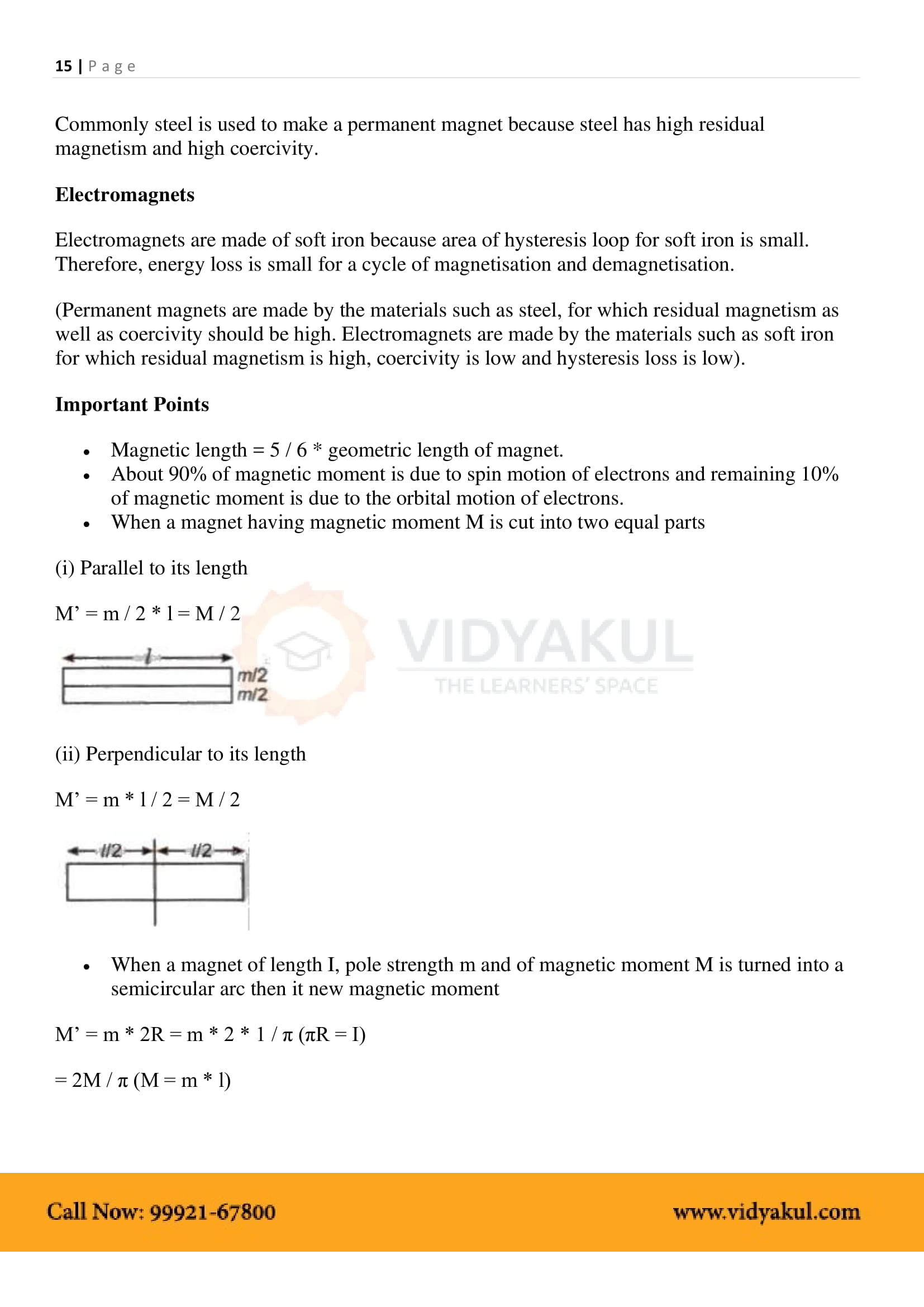
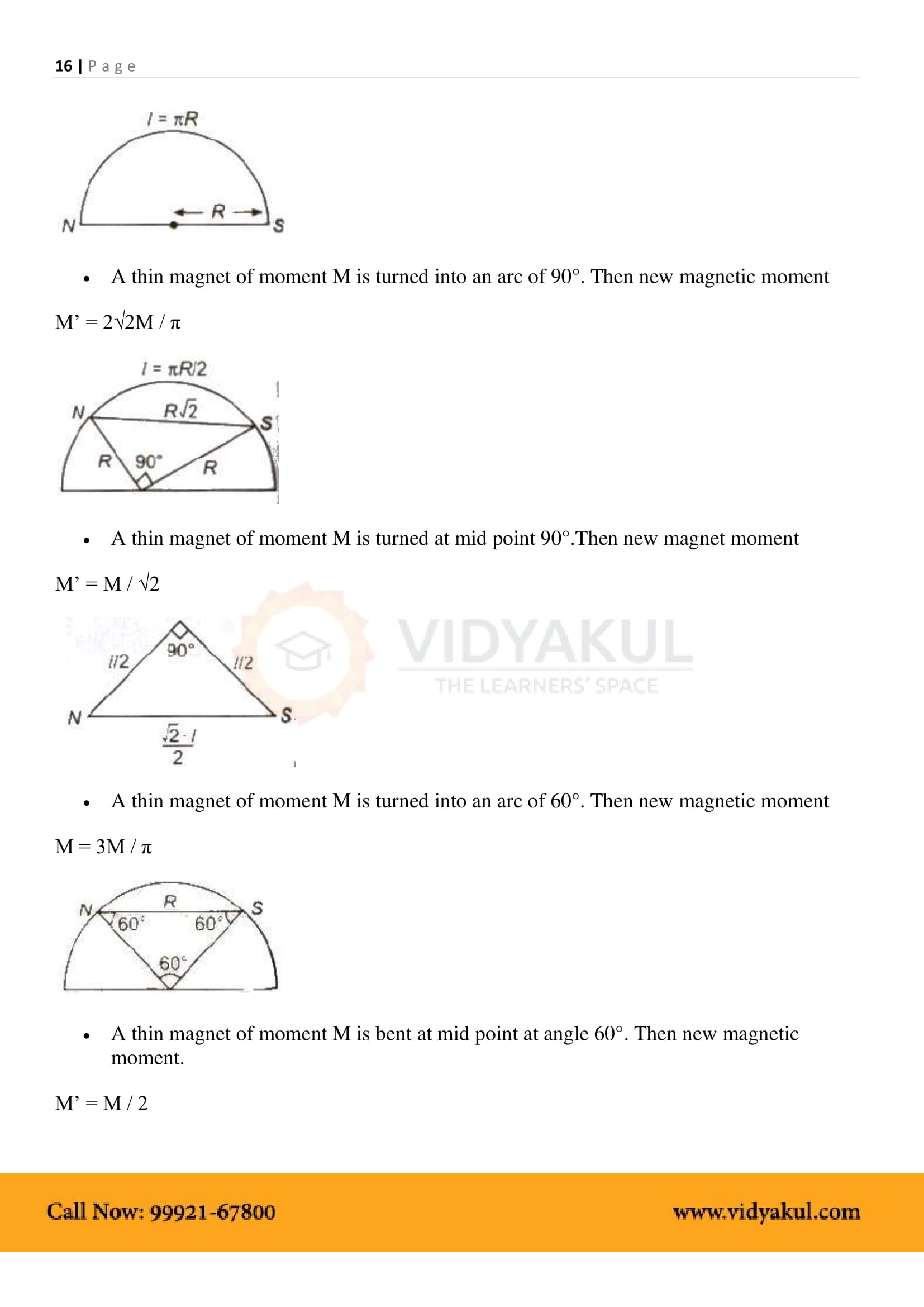
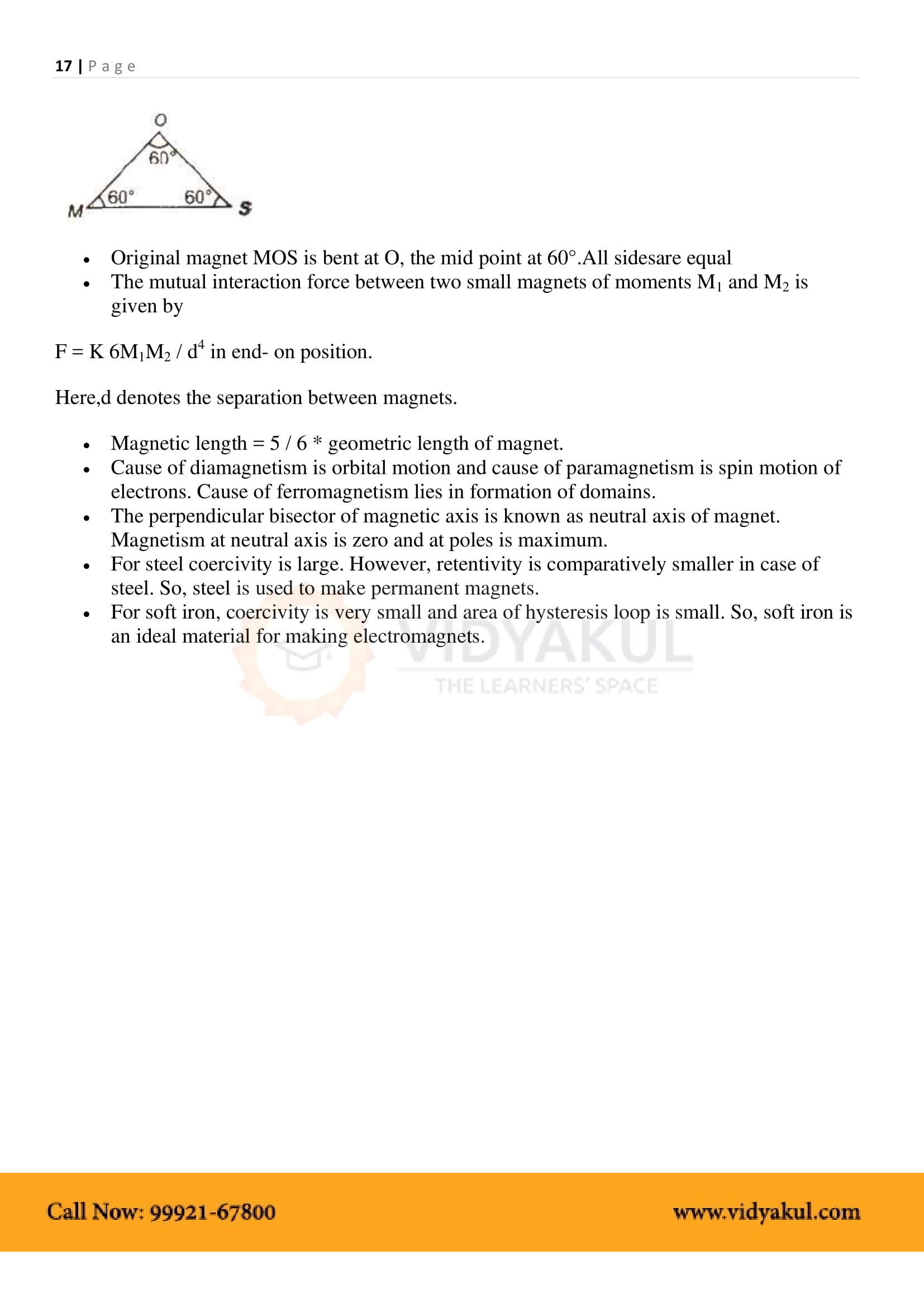
Important Links:
Few Important Questions
As we go from the magnetic equator towards the geographical south pole, what will be the angle of the dip?
As we move from the equator to Geographical south pole (which is near the magnetic north pole), the vertical component of earth’s magnetic field increases, and hence, angle of dip goes on increasing. At the two magnetic poles, the magnetic needle rests vertically, such that the angle of descent at the two poles is 900. On the magnetic equator, the magnetic needle rests horizontally, such that the dip angle is 00.
A magnetising field of 5000 A/m produces a magnetic flux of 5 × 10−5 wb in an iron rod is 0.5 cm2, then what is the permeability of the rod?
The permeability of the rod will be 2 × 10−4 H/m.
The poles of a horse-shoe magnet each of pole strength 2 Am are 4 cm apart. What is the magnetic moment of the horse-shoe magnet?
The magnetic moment of the horse-shoe magnet is 0.08 Am2.
Practice Questions
Answer the following questions regarding earth’s magnetism:
With the specification of the earth’s magnetic field, name the independent quantities.
In southern India, If the angle of dip at a location is about 30°, do we expect a greater or smaller dip angle in Britain?
If we made a map of magnetic field lines at New Delhi, would the lines come out of the ground or go into the ground
In which direction would a compass be free to move in the vertical plane point if the compass is located right on the geomagnetic north or south pole?
Check the order of magnitude of the earth’s field if the dipole of the magnetic moment is 20 × 1022 J T–1 and is located at its center.



